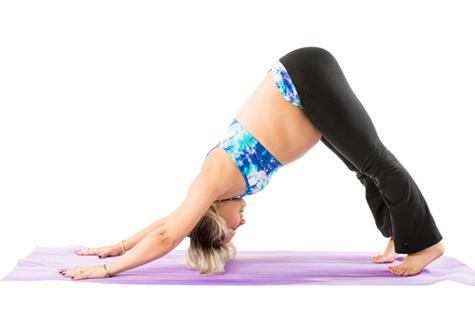Women know all too well that the ‘to do’ list before a baby is born can seem endless. Generally speaking, the majority of the preparation is done to ensure baby enters the world happy and healthy, but sometimes the health and wellbeing of mum is overlooked.
It is one of the reasons that Matthew Squires, Founder of Physio Gym physiotherapy, has developed a unique B.I.R.T.H program – Birthing and Improve the Road to Recovery, based on Squires’ experience of training women prior to giving birth and managing their post-birth recovery.
The birthing element is focused on preparing soon-to-be-mums, both physically and mentally, for the marathon of giving birth. It involves physically conditioning the body using elements of Pilates, Gyrotonic method, weights and body blade exercises in conjunction with breathing and pelvic floor control.
“The aim is to maximise a woman’s fitness levels for birth and to work them at a high enough exercise intensity to create a muscle burn. In that moment, we teach them to control their breath and their pelvic floor muscles simultaneously. This multi-skilling is vital in preventing any tearing of the pelvic floor as the uterus works to push out the baby,” explains Squires.
He found that mothers often saw the birth of the child as the end point, but it is only the start of the journey.
“The moment of birth is like getting to the top of Heart Break Hill in the City to Surf, but the rest of the race needs to be completed to maximise recovery.”
The ‘recovery to health’ element come into play after birth and it is essential in preventing issues such as prolapses, incontinence and chronic back pain in the long term.
Squires recommends early targeted intervention as early as two weeks after birth.
This may begin with simple breathing exercises to assist in the ‘re-knitting’ of the abdominals and the stimulation of the pelvic floor. One third of all women experience a compromised pelvic floor post-birth, which can lead to issues down the line. Squires emphasises that the amount of effort put in before birth will minimise the post-birth trauma and ultimately lead to a much speedier recovery.
Squires has seen many women in his practice who have experienced abdominal separation during birth, known as diastasis recti. This separation can last many years after birth if not treated proactively early on.
“The key to our program is to start with breath control and knit from ribs down to pelvic floor. We use our specialised Pilates and Gyrotonic exercise equipment to create targeted abdominal exercises. In the beginning stages, as women try to feel sensation in their pelvic floor, we often do targeted pelvic rocking exercises and leg work that maximises reflexive contraction of the floor. An early return to graded exercises on the right equipment will help this process,” says Squires.
Apart from pelvic and abdominal issues, physiotherapy can also assist with managing gestational diabetes, which affects 5% of women during pregnancy.
“The key to managing this is to exercise at a high intensity and stimulate the muscle’s ability to absorb blood sugars. Exercising at this level can be challenging for people who are not used to intense exercise, so it is important for this to be managed by a professional and graded over time.”
Here are four top tips from Michael to help expecting mums improve the birthing experience.
- Aim to exercise at a healthy intensity to prevent gestational diabetes.
- Learn how to contract the pelvic floor and how to make it relax as you exert yourself.
- Your birth partner can make a large difference to help the process, they made need some pre-birth training tips.
- Pain is not a bad thing and needs to be faced rather than avoided. Particularly for first time mothers, their body needs to learn how to push out the baby. Some of the initial pain comes from the uterus pulling on the spine as it co-ordinates itself for the larger expulsive contractions. Pain medications often slow the birthing process and the uterus’ ability to push out the baby.



















__small.png)










